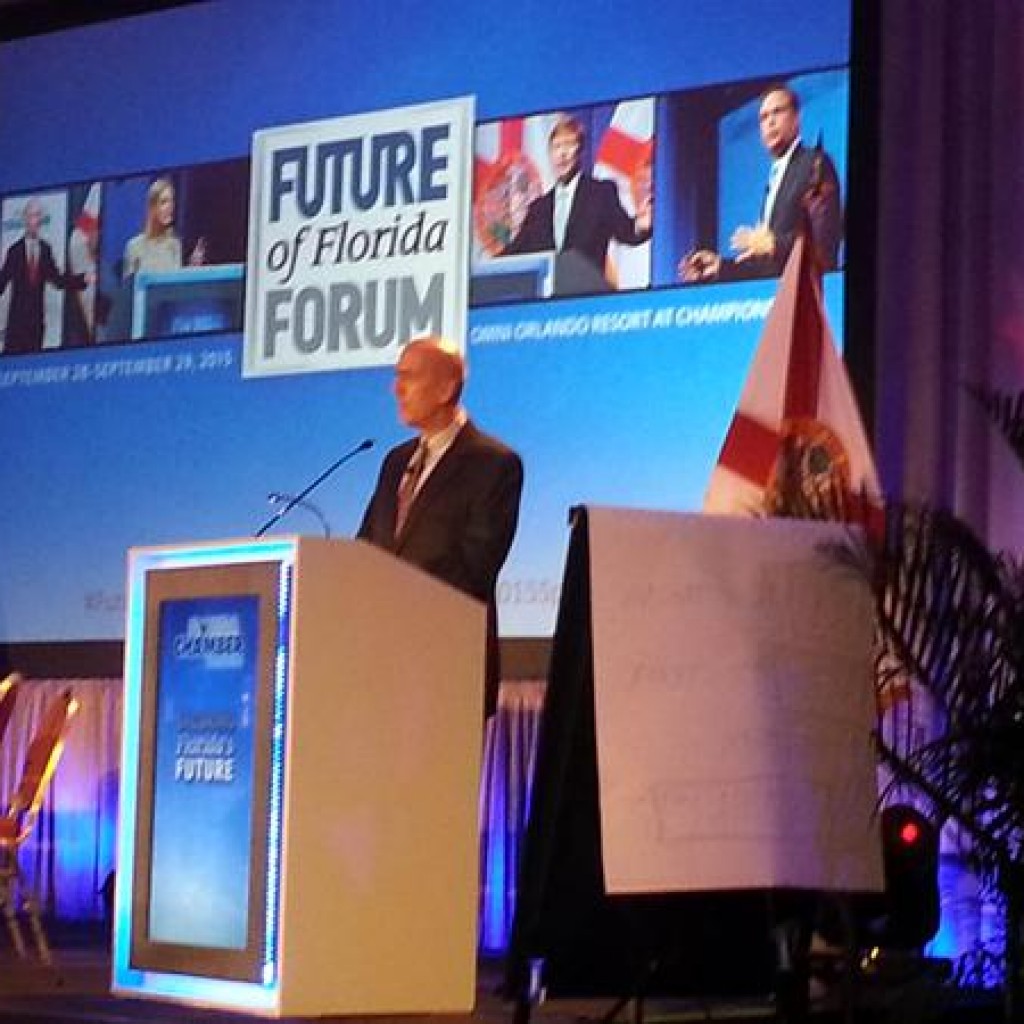
A panel of business health experts said improving employee wellness takes some focus and a plan, but that plan can start simple, such as moving meetings from the conference room to a walk around the block.
The panel, held Tuesday as part of the Future of Florida Forum in Orlando, featured the employee health program heads for Sodexo North America, Florida Hospital and Rosen Hotels and Resorts as well as the education director from the newly minted Dr. Phillips Center Florida Hospital School of Arts and Wellness.
No matter what kind of health program a business starts, it’s important to focus on the right people, said Stephanie Lind of Florida Hospital.
“At Florida Hospital we call it the 20-60-20 rule,” she said.
Lind said about 20 percent of workers are hyper-motivated and will show up for anything, while another 20 percent are can seem impossible to reach. The biggest piece of the pie, though, are the 60 percent of employees who just need a little push to get moving, and getting them involved is key.
Women are more likely to show up for a health event if it’s focused on a topic such as stress management or overall wellbeing than one that’s focused on a specific chronic disease, she said.
At the other end of the spectrum, Sodexo Health Director Nebeyou Abebe pushed a systems-based approach to employee health. By getting involved in the treatment for chronic diseases, he said companies can save a lot on healthcare costs.
Abebe said building partnerships with community organizations – public and private – and making sure employees with chronic diseases have the support they need at work and at home can not only increase productivity in those individuals, but can also engage at-risk employees.
Ashley Bacot, the risk manager for Rosen and president of ProvInsure Inc., said it’s also important for managers to lead by example. Snacking on fruits at work rather than cookies, for example, can help get employees in the right mindset.
Rosen’s health program includes in-house medical care, which allows the company to take a more personal approach with employee health. Instead of a few minutes of face time with a doctor, employees get as long as they need and can schedule a visit without much hassle. That makes it easier for employees to stay on top of routine screenings such as mammograms, which can save a company a lot of money.
“Every dollar we put into our on-site clinics saves us $8.50,” Bacot said. “Our return on investment is due to very common sense practices.”
But will providing top-tier care make it easier to draw in blue chip talent? It may help a bit, Bacot said, but the true value comes in how effective good programs are in retaining employees.
“The hotel industry has a turnover rate between 50 and 100 percent,” he said. “Ours is 14 percent.”
Programs don’t have to be all number crunching, though. Dr. Phillps Center education director Dana Brazil said a mix of healthly activity and entertainment – or “healthtainment” – can also get workers moving. Her organization matched an illusionist with physical therapists to teach patients tricks that include key therapy exercises. Brazil said creative approaches to health can get people moving when nobody’s looking.
Though they differed in their approach, all said sustainability is key. Planning a once-a-year event is a great way to jumpstart a program, but there is no substitute for a long-term approach to improving employee health.



